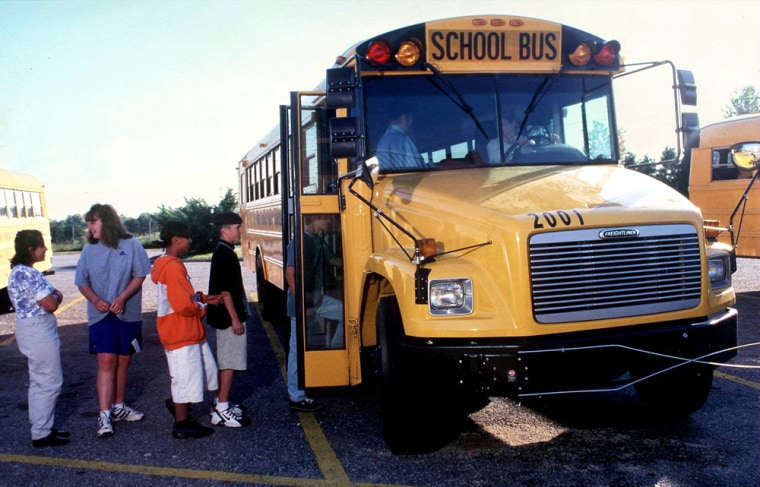Children riding on school buses are breathing in more pollution than people standing out on the streets, U.S. researchers concluded in a new study.
They found that exhaust from the buses was leaking into the passenger cabin, and probably affecting the children. Older buses were the worst, they found.
And exhaust “scrubbers” did little to help, perhaps because the exhaust is coming inside before it gets to the devices, the team at the University of California, Berkeley, found.
“In a single day, a child riding a school bus will breathe in anywhere from seven to 70 times more exhaust from that bus than a typical Los Angeles resident will inhale from all school bus emissions in the area,” said Julian Marshall, a researcher who led the study.
'Shocking' conclusion
“For every metric ton of pollution emitted by a school bus, the cumulative mass of pollution inhaled by the 40 or so kids on that bus is comparable to, or in many cases larger than, the cumulative mass inhaled by all the other people in an urban area,” Marshall added in a statement.
“That the values were even close was shocking.”
The report did not specify whether the problem was caused by damaged exhaust pipes or faulty design.
Writing in the journal Environmental Science and Technology, Marshall and colleagues said they analyzed results from tracer-gas experiments conducted by scientists at UCLA and UC Riverside.
They measured the air in six empty school buses traveling through established routes in Los Angeles, with windows both opened and closed.
Gas tracer detected leaks
Five of the buses were diesel and built between 1975 and 1998. One 1998 model was equipped with a particle trap to reduce emissions. A sixth bus, built in 2002, ran on compressed natural gas.
The researchers put a gas called sulfur hexafluoride into the exhaust system and then set tracers to detect it. The gas is not normally found in air, so the researchers could tell whether emissions came from the bus’s own exhaust.
“We determined that concentrations of key air pollutants were higher inside the bus cabins than outside the cabins,” said Eduardo Behrentz, who also worked on the study.
“Because so many children ride school buses, reducing the emissions of a school bus would give policymakers more bang for their buck than the same reduction of emissions from other diesel vehicles, such as an 18-wheeler or a construction truck,” said Marshall.
